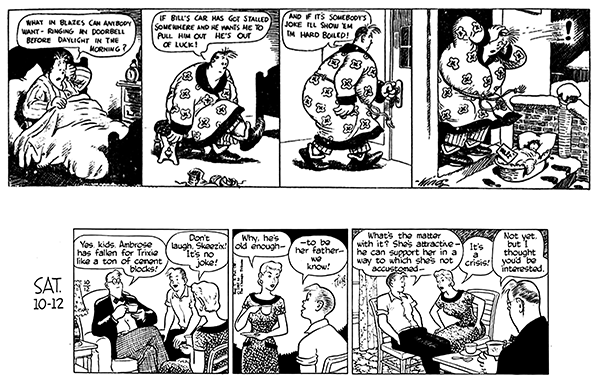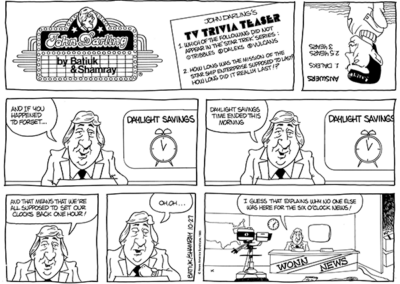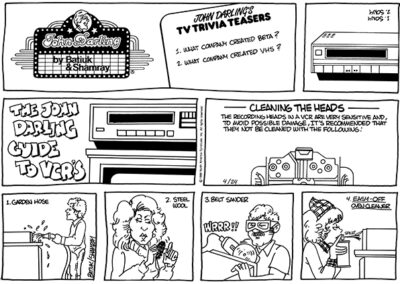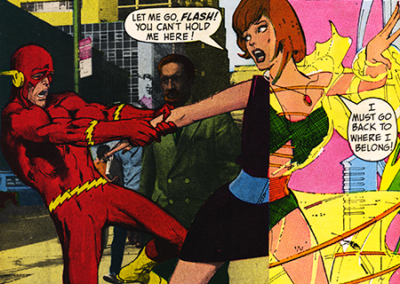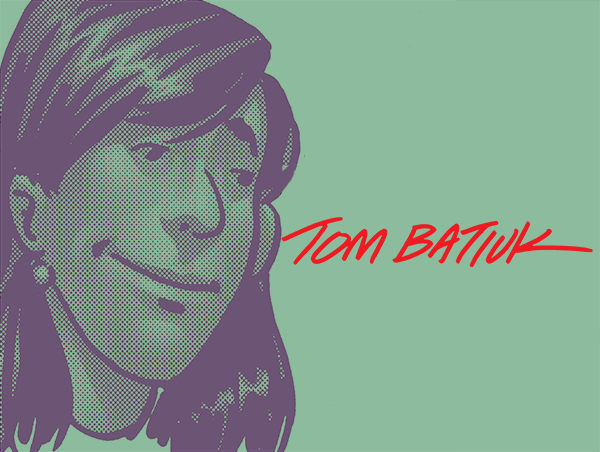Along the way, Funky’s 10th anniversary in 1982 passed unremarked. At the start when I first slipped into the Funkyverse, I wondered if Funky would last even ten years, but when I slipped back out and looked at the calendar, the feature already had its first decade under its belt and was rolling merrily along. I was in the comfort zone and obeying all the speed limits. But out there, somewhere just beyond the horizon, heavy weather was brewing and it was causing my spider sense to tingle. I was beginning to have unsettling mature thoughts. For starters, the high school generation that was in school when Funky began was now out of college and starting their adult lives. My audience was moving on, and I was beginning to feel that I wanted to move on with them. Trying to be young was beginning to seem really old. It’s, quite frankly, the position you’re happily hoping you’ll have to deal with one day when you’re first starting out. Every fictional character that becomes a part of the popular culture from Little Orphan Annie to Spider-Man reaches that tipping point where they either stay the same forever or grow up and older. How you deal with this Peter Pan problem is a tricky bit of business. There are several roads from which to choose. Highway One is what I’ll call the Beach Boys route, where you play the old tunes over and over and pretend that nothing has ever changed. A variation on that, or Highway Two, is to not substantively change anything, but to try to make cosmetic changes that make it appear as if you are moving on. Highway Two is the fast lane to Patheticville Hell and a bad compromise that’s to be avoided at all costs. My own predilections always leaned toward the third option—allowing things to change and your creations to grow up.
As a kid reading the Akron Beacon Journal comics, without quite knowing why, I always liked the fact that in Gasoline Alley the characters I was seeing had grown up from younger versions that predated my existence. Skeezix was out of the army and starting a family of his own in the strip by the time I encountered it, but there were enough flashbacks to his being found on the doorstep of Walt Wallet that I understood that these characters were moving along in their lives, unlike the characters in most of the other strips who were all preserved in amber. Frank King, Gasoline Alley’s creator, had the magical ability to make each day’s strip seem like another breath in the passing pageant of life. Even at that tender age, I was filing away the thought that when my time came, that’s how I should do it. Later when I was in college, I encountered Ian Fleming’s The Man with the Golden Gun and was again impressed with how he had aged his character James Bond. I thought it was a gutsy move. Of course, Fleming was eventually going to run into the problem of just how aged can you make an aging spy, but Fleming’s untimely death spared him having to wrestle with that. Needless to say, that’s a fairly draconian remedy. Nevertheless, my inclinations were already there, and all that was needed to cement them in place was for someone to call me on it—and someone did.
From The Complete Funky Winkerbean Volume Four


